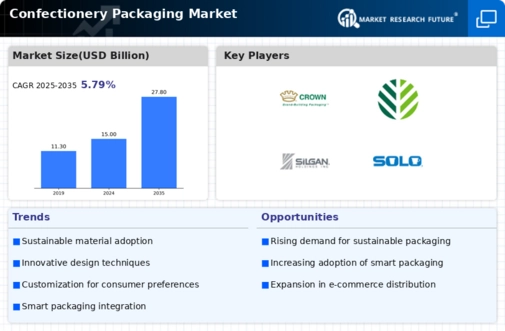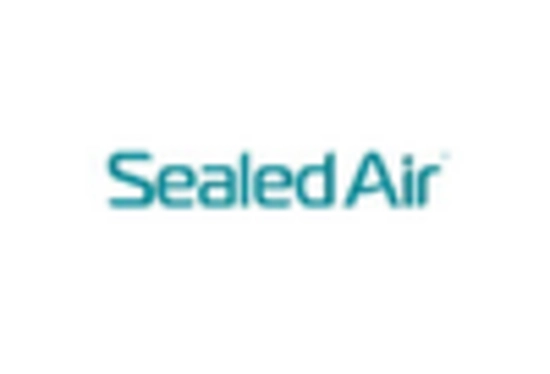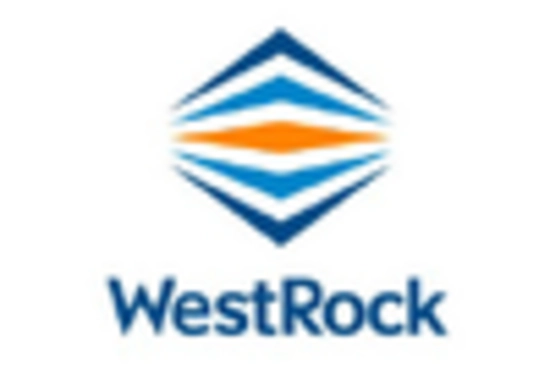E-commerce Growth
The rise of e-commerce is significantly impacting the Confectionery Packaging Market. As online shopping continues to gain traction, the demand for packaging that ensures product safety during transit is increasing. E-commerce platforms require packaging solutions that are not only visually appealing but also functional and protective. Data indicates that the e-commerce sector is expected to grow at a rate of approximately 15% annually, which directly influences packaging requirements. Companies are adapting their packaging strategies to cater to this shift, focusing on lightweight, durable, and easy-to-open designs. This adaptation is crucial for maintaining customer satisfaction and reducing return rates, thereby driving growth in the Confectionery Packaging Market.
Customization Trends
Customization trends are reshaping the Confectionery Packaging Market, as consumers increasingly seek personalized experiences. Brands are responding by offering tailored packaging solutions that reflect individual preferences and enhance brand loyalty. This trend is particularly evident in seasonal and limited-edition products, where unique packaging designs can create a sense of exclusivity. Market data suggests that customized packaging can lead to a 20% increase in consumer engagement and sales. Companies are leveraging digital printing technologies to produce small batches of customized packaging efficiently. This ability to cater to specific consumer desires not only differentiates brands in a competitive market but also drives innovation within the Confectionery Packaging Market.
Health and Wellness Trends
Health and wellness trends are becoming a significant driver in the Confectionery Packaging Market. As consumers become more health-conscious, there is a growing demand for packaging that communicates nutritional information clearly and effectively. Brands are increasingly focusing on transparent packaging that allows consumers to see the product, thereby fostering trust and encouraging healthier choices. Additionally, the rise of functional confectionery products, such as those with added vitamins or natural ingredients, necessitates packaging that highlights these benefits. Market Research Future indicates that products with clear health benefits can see a sales increase of up to 30%. This focus on health and wellness is likely to continue influencing packaging strategies within the Confectionery Packaging Market.
Sustainability Initiatives
The Confectionery Packaging Market is increasingly influenced by sustainability initiatives. Consumers are becoming more environmentally conscious, prompting manufacturers to adopt eco-friendly materials and practices. This shift is reflected in the growing demand for biodegradable and recyclable packaging solutions. According to recent data, the market for sustainable packaging is projected to grow at a compound annual growth rate of over 7% in the coming years. Companies are investing in innovative materials that reduce environmental impact while maintaining product integrity. This trend not only aligns with consumer preferences but also helps brands enhance their corporate social responsibility profiles. As a result, sustainability is not merely a trend but a fundamental driver shaping the future of the Confectionery Packaging Market.
Technological Advancements
Technological advancements play a pivotal role in the evolution of the Confectionery Packaging Market. Innovations in packaging machinery and materials are enabling manufacturers to enhance efficiency and reduce costs. For instance, the integration of automation and smart technologies in packaging processes is streamlining production and improving quality control. Additionally, advancements in materials science are leading to the development of packaging that extends shelf life and preserves product freshness. The market is witnessing a surge in the adoption of intelligent packaging solutions that provide real-time information about product conditions. This technological evolution is expected to drive growth in the Confectionery Packaging Market, as companies seek to leverage these advancements to meet consumer demands and improve operational efficiency.

















Leave a Comment